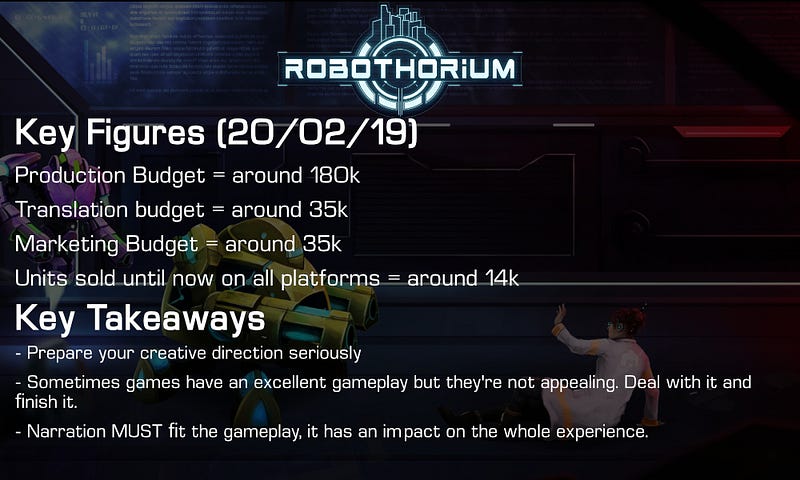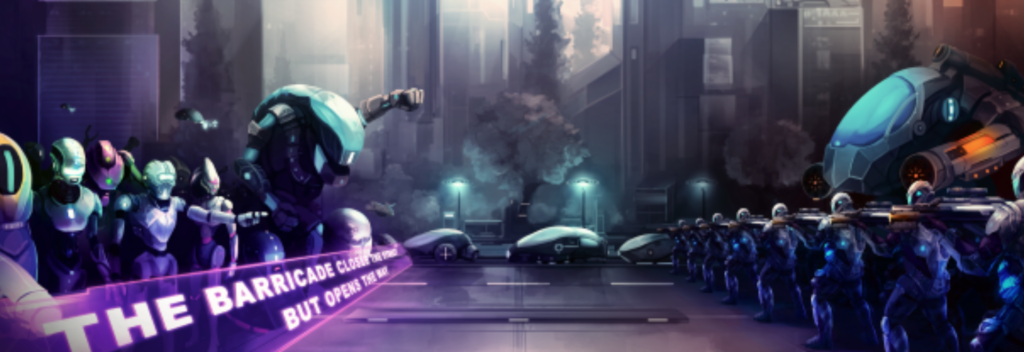
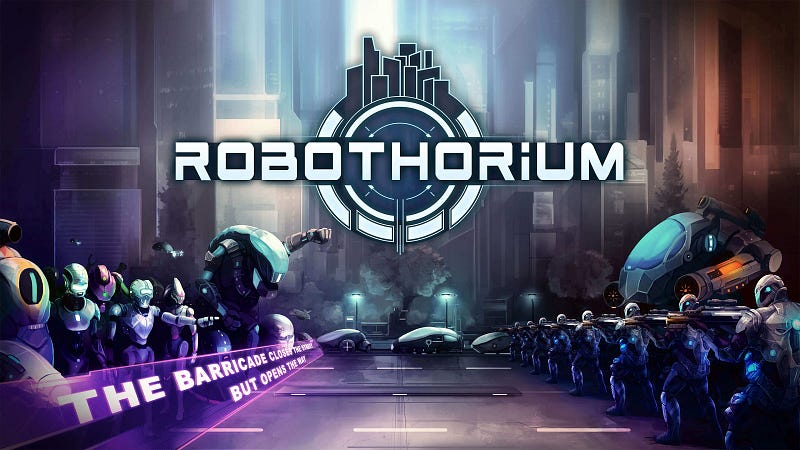
First, a note about how I’m doing this post-mortem. I’m a Marketer who arrived in the team a few weeks ago and gathered the feedback of everyone working on it. They sent me by DM to make it a bit more “anonymized” and “less influenced” by other people experience. I also added feedback from my own point of view, as someone arriving in the latests months of a project.
Who worked on it

FYI We’ll be releasing Sigma Theory on April 19th if you’re interested.
How it went
After the success of Dungeon Rushers, Johann, the creator of Goblinz Studio, wanted to work on a game using the same codebase & gameplay. It would be a sci-fi RPG game taking the gameplay basis of Dungeon Rusher but improving it. The same team would be on board and use the experience gained on the first game of Goblinz Studio.
There were some hiccups and the art director of Dungeon Rushers wasn’t available any more. Johann hired Mathieu to do Robothorium! It’s quite important because it was Mathieu’s first project. He learned a lot but still had to gain experience to make something cool.
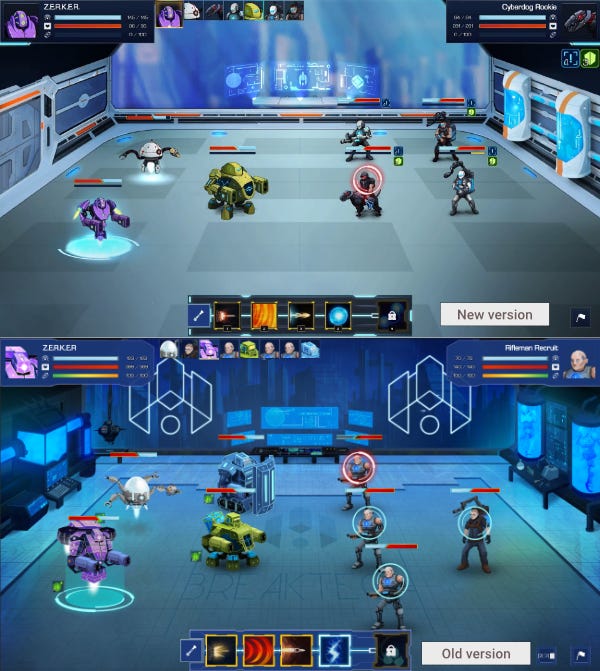
Mathieu accommodated nicely but the art and creative direction were a bit clunky from the beginning. The team had to do a complete rework of the art direction and change all sprites, for the sake of the game. It did help but we still noticed players were not interested in it that much.
Using the old engine was a bit hard to do at first. We used the basis of Dungeon Keepers. Using an old basis seems flawless and the best use case. That’s you know, in programmers dreams. Not in reality.
The story is a sci-fi tale about a war between robot and humanity. There is a whole plot about how robots trying to integrate in a future society. There are also links between dangerous science and who should own it. Alas, the writing is a bit disconnected from the gameplay! We could feel that the sci-fi part wasn’t interesting for players.

Dungeon Rushers was very fun and put cheesy adventurers in crazy dungeons. Robothorium was “serious business” and the writing was different from Dungeon Rushers. Some players didn’t really recognize themselves in it.
Our marketing was very focused on robots, sci-fi, story until we realized that the very best thing of Robothorium is its gameplay. The gameplay is generous, with skill trees, crafting, looting and such. The progression curve is nice. We decided to shift the marketing more onto the gameplay and less around the story.
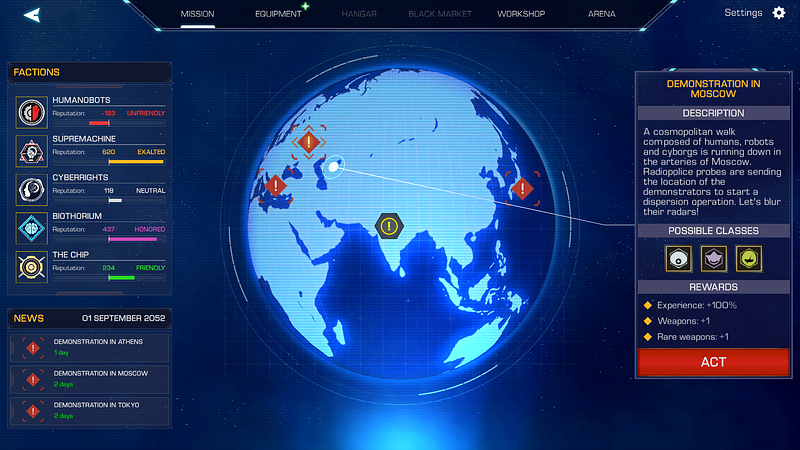
We arrived near the end of the Early Access and we knew that the game was good, but the sales couldn’t skyrocket. The team decided to give it’s best though because everyone loved the game. All the team pushed trough the release, and it went pretty well. We organized a stream run with around 30 streamers ready to cover it around release. We had a coupon with Chroma Squad which generated significant sales!
Today we’re preparing the 1.1 patch for Switch + PC, but we’re unsure about how we’ll push after that. We want to work on our new projects like Legend of Keepers. We also have to keep working on Sigma Theory & Seeds of Resilience.

What went right
- The gameplay is solid. There are a lot of strategy to try, the rpg parts allow for customization and it’s a good tactical game. Early Access helped to make a strong & balanced gameplay.
- The project “only” lasted 2 years and made okay revenue for this kind of length. On the side, we had other projects to make and the team made the project without crunch. It feels like team management is good!
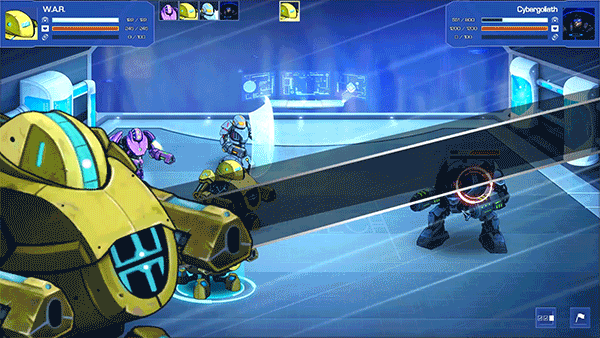
- The marketing was solid and allowed for a lot of experiments. Spendings between production & marketing were well balanced.
- People like to work at Goblinz, because there is a lot of freedom and trust between people. Everyone told me they liked working here (well… remotely, but still here!).
- Bastien hunted community feedback, bugs reports and answers to every reviews possible! It helped with our rating and branding, people saw we care about addressing issues.
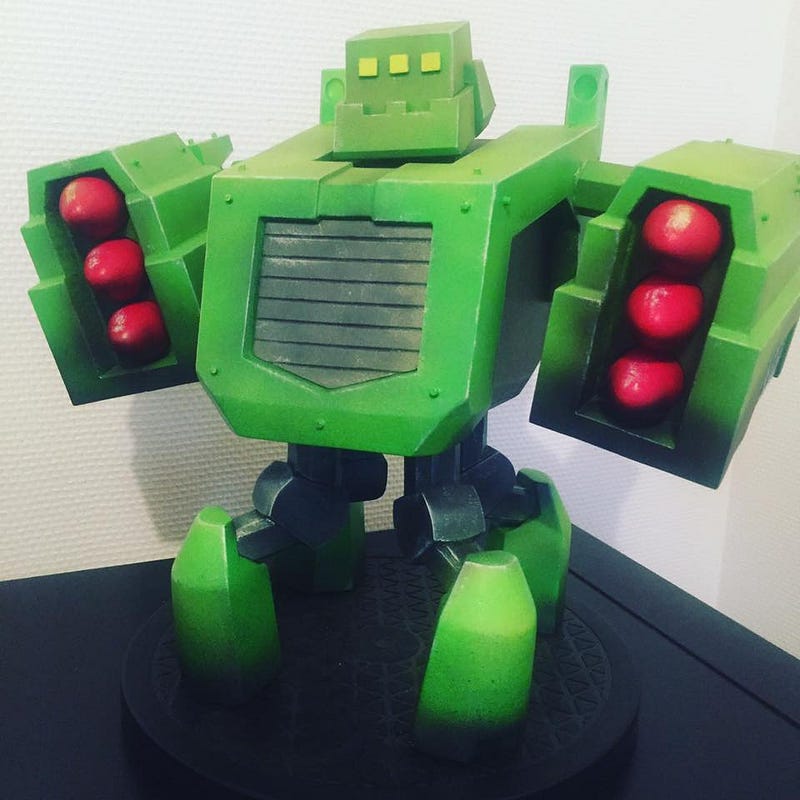
What went wrong
- The creative direction at the beginning was very weak. It created a lot of problem around writing and art direction. People weren’t too sure on where the project was going.
- Not everyone on remote work was fitting. Remote can be great for some people, harsh for others.
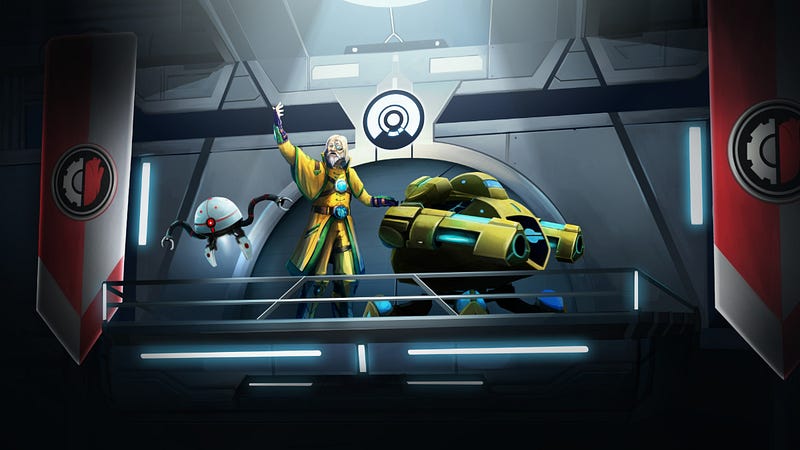
- The project wasn’t super easy & chill. The reshaping of the art direction was exhausting and took a lot of time. Some people didn’t really live it well!
- Matching procedural missions building with history & gameplay. It was hard to do and the result is quite deceiving.
- People lacked a bit of experience so the production value is a bit weak, but they definitely learned a lot. We’re currently working on the first iterations of our next game Legend of Keepers. You can see this improvement at every level.

Stats for nerds
I love stats. You love stats. Let’s make a stats party!
As of today 20/02/2019:
- 63 Steam news
- Robothorium Twitter = 800 followers
- Robothorium Facebook = 400 followers
- Production Budget = around 180k
- Translation budget = around 35k
- Marketing Budget = around 35k
- Rough units on all platforms = around 14k

We’re french but have quite a low amount of French users, we don’t know why. For RU, we hired Pangolin (https://twitter.com/YaPangolin) around launch to help us a bit. China is still quite low cause we had some issues with our publisher there.
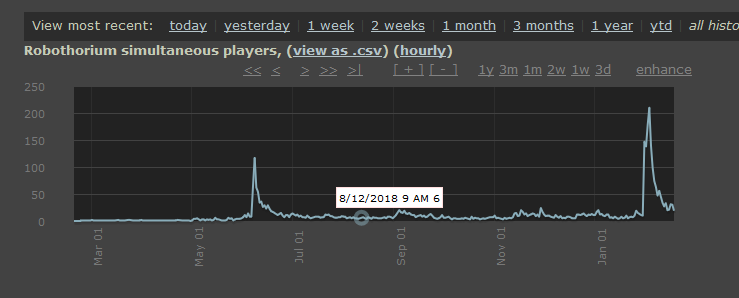
125 around EA launch SP ; 5–10 daily ; 220 around launch. Still going :)!
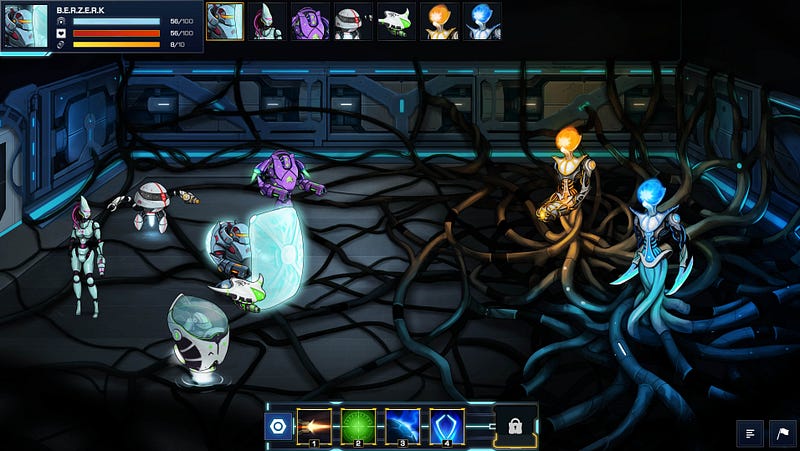
What we learned
- Prepare your creative direction seriously. It’ll be useful all along the production and is hardly “lost time”.
- Sometimes games have an excellent gameplay but they’re not appealing. You can patch it a bit, but sometimes it’s a lost cause. Deal with it and finish the project.
- Narration must fit the gameplay, it has an impact on the whole experience.
